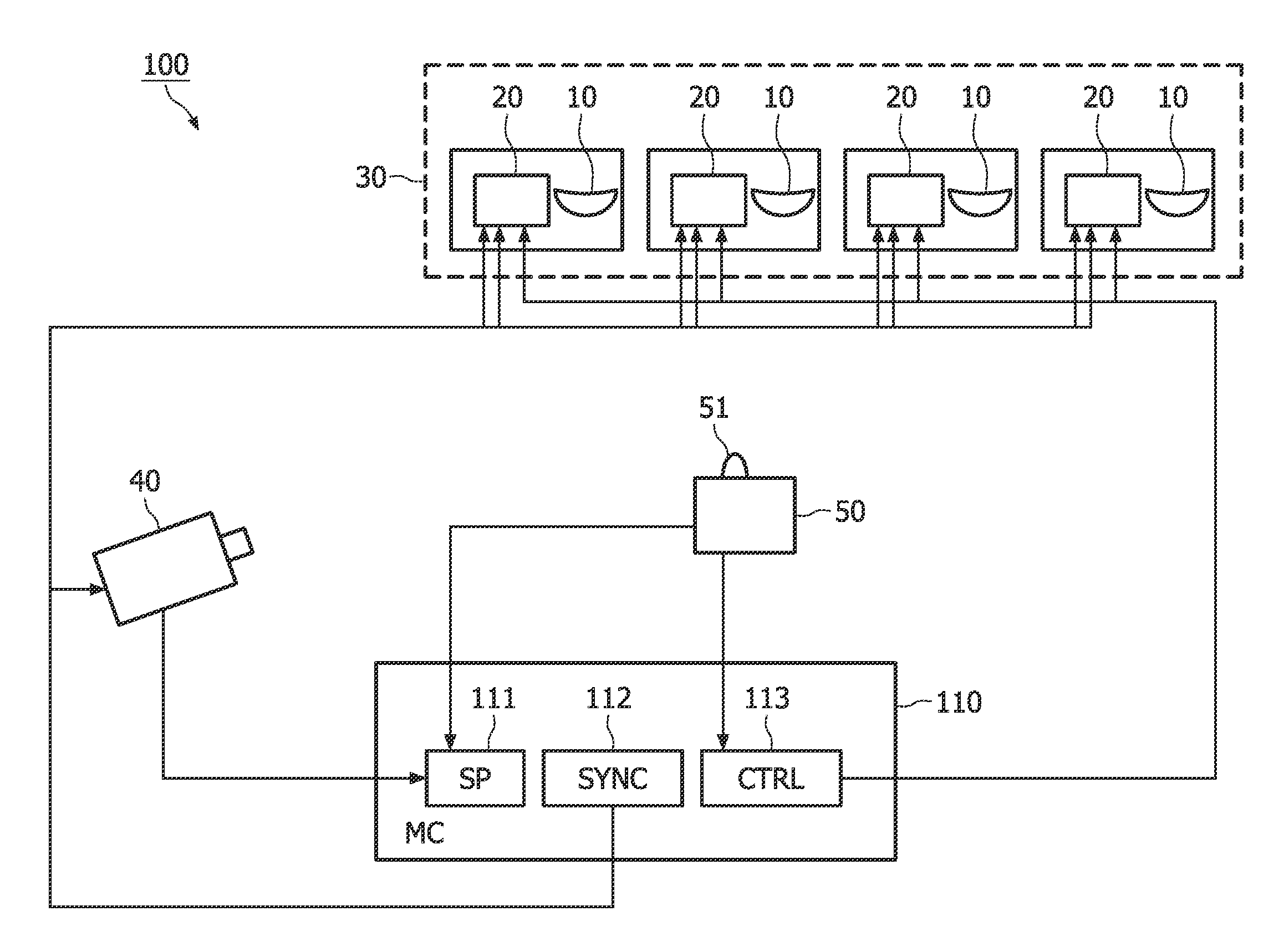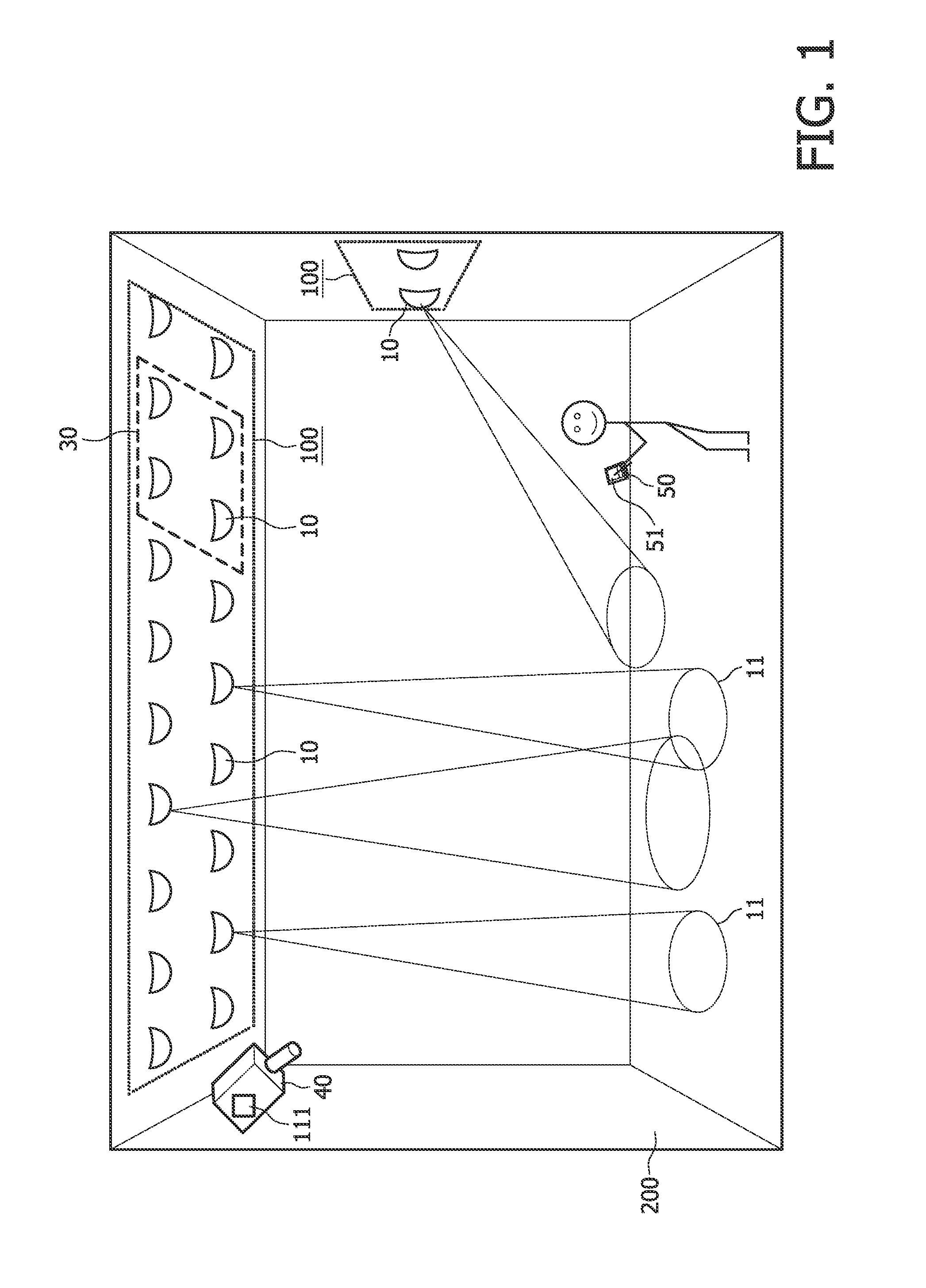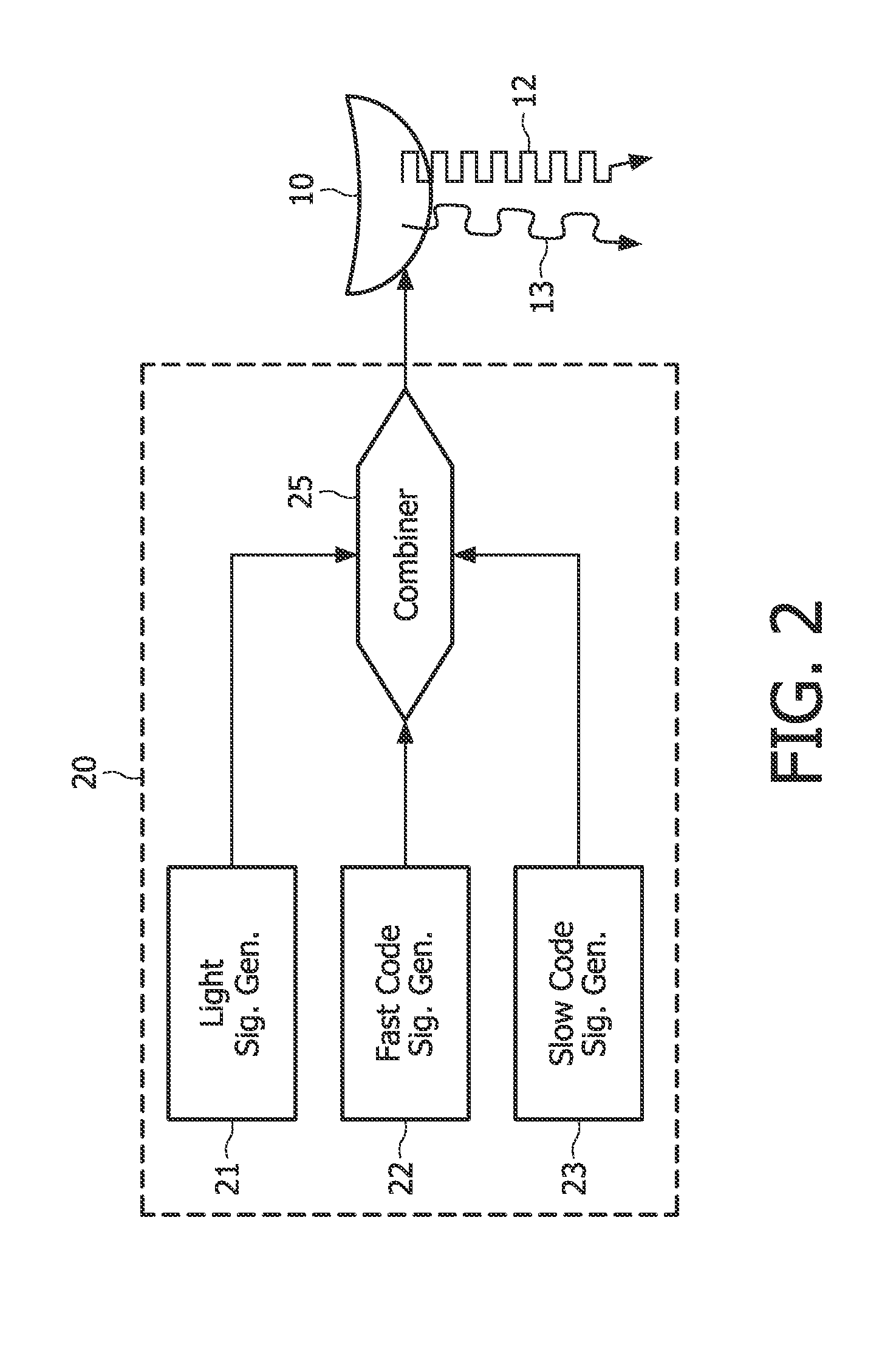Illumination system and method for processing light
a technology of light and a filter system, applied in the direction of lighting devices, electrical devices, light sources, etc., can solve the problems of high cost and achieve the effect of large data transfer bandwidth and low cos
- Summary
- Abstract
- Description
- Claims
- Application Information
AI Technical Summary
Benefits of technology
Problems solved by technology
Method used
Image
Examples
Embodiment Construction
[0019]FIG. 1 shows structure 200—in this case a room—with an installed illumination system 100. The illumination system comprises a plurality of light sources 10, provided with an encoder (20—see FIG. 2) arranged to enable light emitted from the light sources to comprise light source identification codes. The light source may for instance be high / low pressure gas discharge bulbs, inorganic / organic LEDs, or laser diodes. Possibly several light sources 10 may be combined in a light module 30. The illumination system further comprises a camera 40 placed in the structure 200 enabling it to register images of illumination spots 11 of the light emitted from the light sources 10. A signal processor 111, f.i. incorporated in the camera 40 or in the master controller (110—see FIG. 3) of the illumination system 100, is arranged to derive the light source identification codes from registered images. Through the determination of the light source identification codes, it is possible to correlate...
PUM
 Login to View More
Login to View More Abstract
Description
Claims
Application Information
 Login to View More
Login to View More - R&D
- Intellectual Property
- Life Sciences
- Materials
- Tech Scout
- Unparalleled Data Quality
- Higher Quality Content
- 60% Fewer Hallucinations
Browse by: Latest US Patents, China's latest patents, Technical Efficacy Thesaurus, Application Domain, Technology Topic, Popular Technical Reports.
© 2025 PatSnap. All rights reserved.Legal|Privacy policy|Modern Slavery Act Transparency Statement|Sitemap|About US| Contact US: help@patsnap.com



